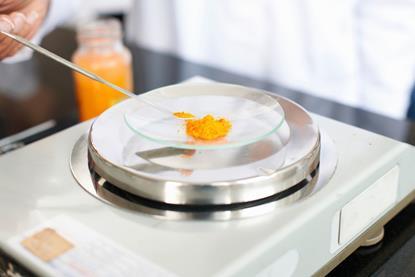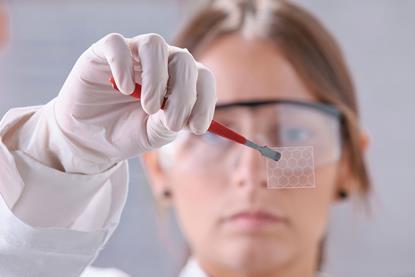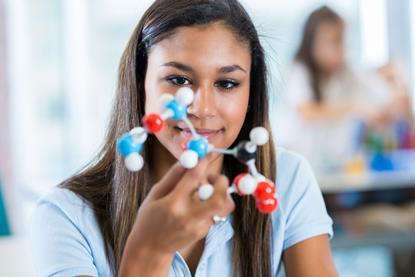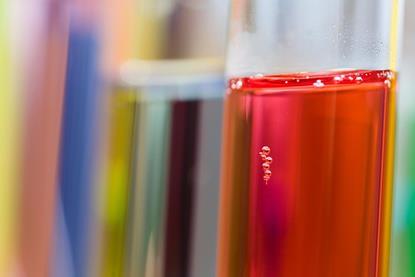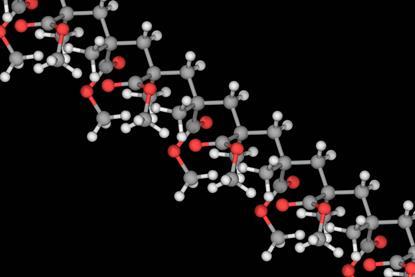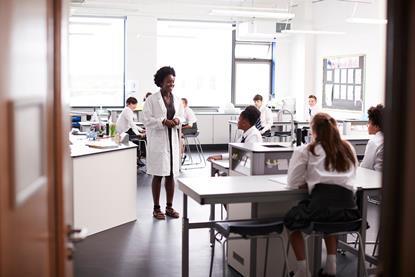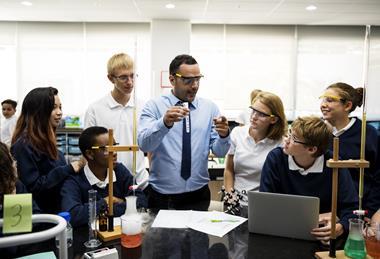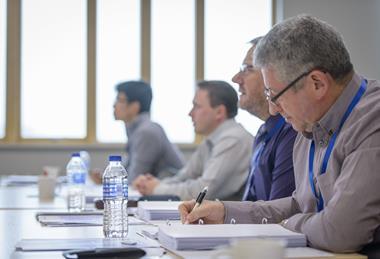- Home
- I am a …
- Resources
- Collections
- Remote teaching support
- Starters for ten
- Screen experiments
- Assessment for learning
- Microscale chemistry
- Faces of chemistry
- Classic chemistry experiments
- Nuffield practical collection
- Anecdotes for chemistry teachers
- Literacy in science teaching
- More …
- Climate change and sustainability
- Alchemy
- On this day in chemistry
- Global experiments
- PhET interactive simulations
- Chemistry vignettes
- Context and problem based learning
- Journal of the month
- Chemistry and art
- Classic chemistry demonstrations
- In search of solutions
- In search of more solutions
- Creative problem-solving in chemistry
- Solar spark
- Chemistry for non-specialists
- Health and safety in higher education
- Analytical chemistry introductions
- Exhibition chemistry
- Introductory maths for higher education
- Commercial skills for chemists
- Kitchen chemistry
- Journals how to guides
- Chemistry in health
- Chemistry in sport
- Chemistry in your cupboard
- Chocolate chemistry
- Adnoddau addysgu cemeg Cymraeg
- The chemistry of fireworks
- Festive chemistry
- Collections
- Education in Chemistry
- Teach Chemistry
- Events
- Teacher PD
- Enrichment
- Our work
- More navigation items
Close menu
- Home
- I am a …
-
Resources
- Back to parent navigation item
- Resources
- Primary
- Secondary
- Higher education
- Curriculum support
- Practical
- Analysis
- Literacy in science teaching
- Periodic table
- Climate change and sustainability
- Careers
- Resources shop
-
Collections
- Back to parent navigation item
- Collections
- Remote teaching support
- Starters for ten
- Screen experiments
- Assessment for learning
- Microscale chemistry
- Faces of chemistry
- Classic chemistry experiments
- Nuffield practical collection
- Anecdotes for chemistry teachers
- Literacy in science teaching
- More …
- Climate change and sustainability
- Alchemy
- On this day in chemistry
- Global experiments
- PhET interactive simulations
- Chemistry vignettes
- Context and problem based learning
- Journal of the month
-
Chemistry and art
- Back to parent navigation item
- Chemistry and art
- Techniques
- Art analysis
- Pigments and colours
- Ancient art: today's technology
- Psychology and art theory
- Art and archaeology
- Artists as chemists
- The physics of restoration and conservation
- Cave art
- Ancient Egyptian art
- Ancient Greek art
- Ancient Roman art
- Classic chemistry demonstrations
- In search of solutions
- In search of more solutions
- Creative problem-solving in chemistry
- Solar spark
- Chemistry for non-specialists
- Health and safety in higher education
- Analytical chemistry introductions
- Exhibition chemistry
- Introductory maths for higher education
- Commercial skills for chemists
- Kitchen chemistry
- Journals how to guides
- Chemistry in health
- Chemistry in sport
- Chemistry in your cupboard
- Chocolate chemistry
- Adnoddau addysgu cemeg Cymraeg
- The chemistry of fireworks
- Festive chemistry
- Education in Chemistry
- Teach Chemistry
- Events
- Teacher PD
- Enrichment
- Our work
In-person courses
Face to face professional development for teachers from the Royal Society of Chemistry
All in-person professional development courses are suspended until September 2023. In the meantime, why not check out our online courses?
- Explore our upcoming live online courses
- Try our on-demand online PD courses, free until 31 August 2023
These courses are delivered as either a twilight (after school) event, half-day or full day event. In exceptional circumstances, we can meet a bespoke need combining elements from the following courses into a multi-event course, taking place over a series of different days. All courses address either pre-16 teaching, post-16 teaching or both within the given are of chemistry.
Courses
Organic chemistry
Learn about ways to address the underlying principles of how organic reaction mechanisms work and encourage your students to consider what drives electron movements rather than thinking about reactions in isolation.
Structure and bonding
Delve into the key concepts essential to understanding bonding and explore how to use models to describe and explain observable phenomena. You will understand how to use the orbital model to explain interactions between different types of particles, coloured transition metal ions and many more.
Energy and change
Learning the vocabulary needed to discuss energy changes, how to measure and calculate them and why they occur. Develop understanding of different types of energy changes and how to use them in energy cycles.
Redox chemistry
Travel down an important conceptual pathway leading to a fundamental understanding: all chemical reactions can be perceived as the rearrangement of electrons. Gain a greater understanding of the key concepts in redox reactions.
Equilibria chemistry
Research shows that most students’ difficulties lie with the understanding of the core ideas associated with equilibria rather than the mechanics of doing the calculations. This course focuses on what happens during a chemical reaction, rather than just being able to calculate the right answer.
Analytical chemistry
Analytical chemistry is an important area of chemistry as it provides us with techniques and methods for identifying what something is. These techniques include distillation, chromatography, various chemical tests and various forms of spectroscopy.
Quantitative chemistry
Quantitative chemistry enables chemists to calculate known quantities of materials and by completing this course you’ll develop your understanding of its core ideas as well as how to convey those ideas to your students.
Acids and bases
Explore the identification of patterns in the formulae of acids and bases and attempts to link them to types of bonding and patterns in the periodic table, while developing your confidence in using experiments, demonstrations and discussion to tackle misconceptions in this area of teaching chemistry.
Carbon chemistry
Developing an understanding of simple carbon chemistry using molecular models to help reinforce the link between teaching, learning activities and the underlying chemistry.
Developing and using models
Take a look at some processes involved in developing, using and assessing a model using examples from various areas of chemistry. Understanding the difficulties students face when trying to link macroscopic observations to microscopic explanations, and address this issue using appropriate models and analogies.
Rates of reaction chemistry
Discover ways to teach rates of reaction chemistry through the medium of experimental work. Practical investigations are at the core of this course, which identifies common student misconceptions and helps you develop strategies for overcoming them.
Materials chemistry
From the clothes we wear and the dinner plates we eat off to the new technologies used in sports, medicines and computing, this course will help to develop your understanding of key concepts in materials chemistry.
Pedagogical approaches to chemistry teaching
An effective teacher must have a range of different teaching, learning tools that can be drawn upon and used in the classroom. For effective learning to take place, the teacher must not only have good subject knowledge but also effective pedagogical skills to get the ideas across to the students.
Practical chemistry for NQTs
The focus of this course is on developing practical skills and gaining experience carrying out relevant and interesting practical experiments and demonstrations, to help inspire and engage students.
Chemistry for science teachers
Chemistry for science teachers (formerly 'Chemistry for non-specialists') has been designed to equip you with the confidence, flair and enthusiasm to teach chemistry at pre-16 level. If you teach secondary chemistry but have a background in another subject, this course is for you.
Also in Teacher PD
- Previous
- Next


















